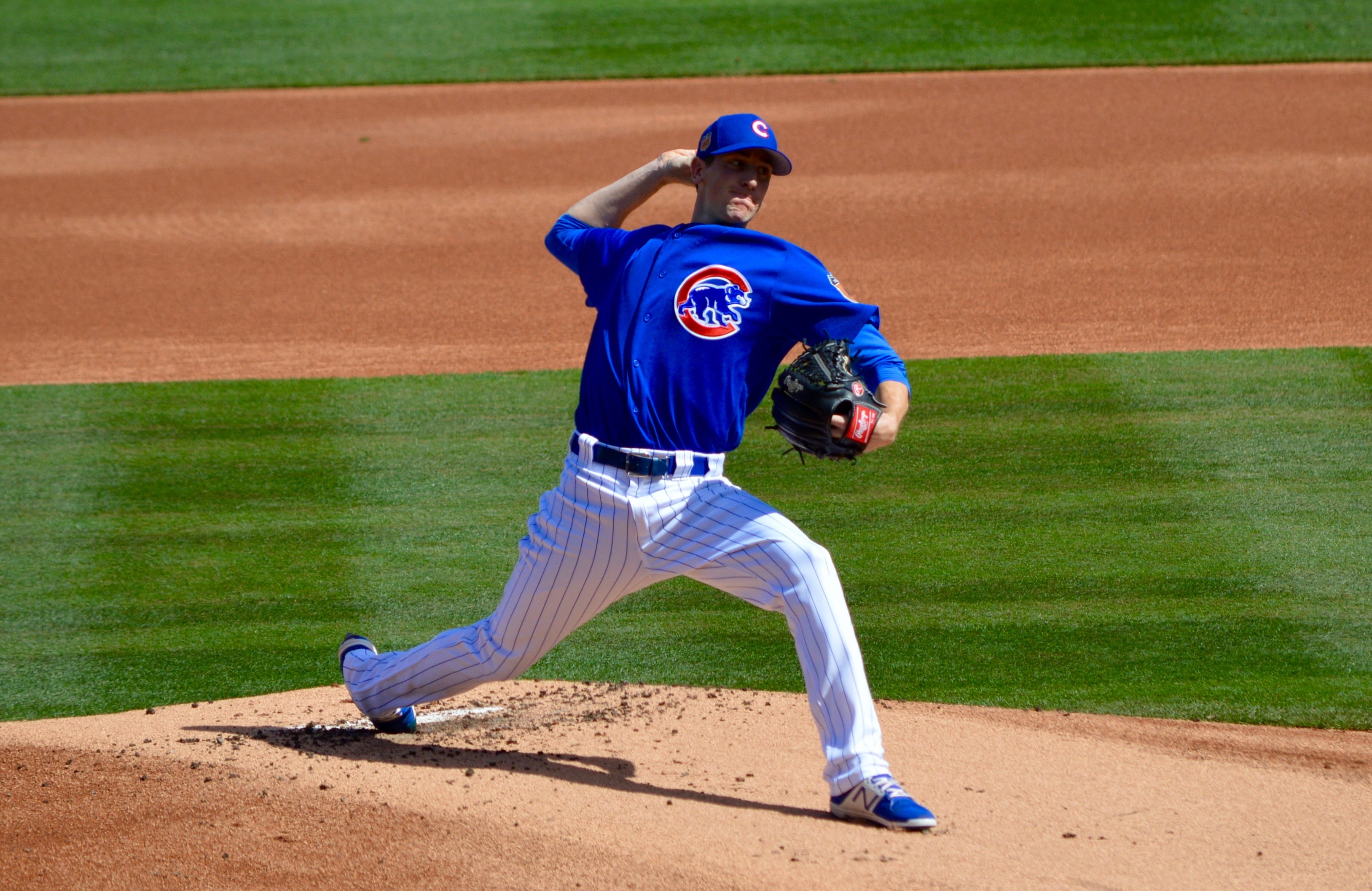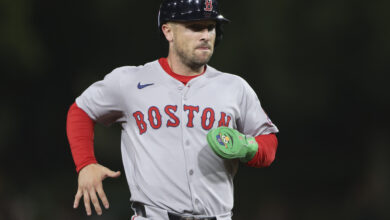
Curve Appeal: Kyle Hendricks Wants to Utilize Breaking Stuff More Often
Pop quiz, hotshot: Who’s the Cactus League ERA leader?
Despite taking a four-month sabbatical from his teaching duties, Kyle Hendricks looked to be in midseason form when he took the mound Saturday afternoon to begin the Spring semester. If it’s true that brevity is the soul of wit, The Professor’s opening lecture was sagacious as all hell: 16 pitches to six batters over a pair of innings, with only one ball making it out of the infield.
Oh, and that one ball? It was only followed up by a double play.
The funny thing about Hendricks — my favorite thing, personally — is that he doesn’t seem like a really exciting pitcher at all. He doesn’t have a blazing fastball or the type of stomach-churning movement that makes you think someone tampered with the video feed. He’s not physically imposing or remarkable in any way, except that he’s conspicuous merely because he is so nondescript. And his general stoicism is such that his expression wouldn’t change whether finding out he won the lottery or discovering that his dog had been hit by a car.
Yet there he is with a wait list to get into his class.
The way Hendricks is able to frustrate hitters into outs despite not having blow-you-away stuff reminds me of one of my old history professors, Dr. Luttmer. Rather than respond immediately to a student’s answer, Dr. Luttmer would pause, which always made me think he was waiting for more. As such, I would inevitably pile a bunch of unnecessary drivel on top of my original statement or I’d end up contradicting myself. It was maddening.
Likewise, opposing hitters are coming up to the plate thinking they can easily get to Hendricks. Then he fires a changeup at them that looks easy enough…until they’ve swung fruitlessly and hear the soft pop of horsehide on leather. Another perfectly located offering, this time a four-seamer, catches them looking and they know they’ve got to do something with the next one. And that’s when he throws the curveball.
At least, that’s what he told ESPN’s Jesse Rogers (video below) he’d like to do more of this season.
“My two-seam and changeup are there, they feel really good,” Hendricks said. “My curveball was big for me last year, even throwing it situationally, just throwing it for a first pitch. So this year I’m hoping I can develop that a little more, use it in more counts, use it late in counts. But just get that spin and feel going early in Spring and see where that can take me.”
We saw how increased confidence in and usage of his secondary pitches led to Hendricks’ ascension last season, allowing him to dispatch hitters quickly and go deeper into games. Further development of the curveball, which has been a slightly above-average pitch for Hendricks, would add that much more depth to an already effective arsenal. When you consider that the bender made up fewer than 8 percent of his total pitches last year, you can see how there’s plenty of room for growth.
Remember, we’re talking about a guy who led the National League in ERA and was a Cy Young finalist without really having to borrow much from his Uncle Charlie. What if he can dial that pitch in to the point where he can really use the hammer as a weapon? Think Oldboy except without the oogy twist.
It’s hard to put much stock in Spring Training results, particularly those from the early offing of the season, but it’s equally hard not to be encouraged by Hendricks’ outing. The fact that he’s less dynamic than some of his peers may actually play to his favor, as there’s perhaps less run-up required for him to be ready to go. There’s also less that can go wrong, relatively speaking, with his free-and-easy delivery.
But don’t let the smooth demeanor fool you, this guy loves to flunk students who step into the box thinking they can breeze through without studying. And if Saturday was any indication of what the rest of the season is going to look like, I can wait to sit at the back of the classroom and observe.

